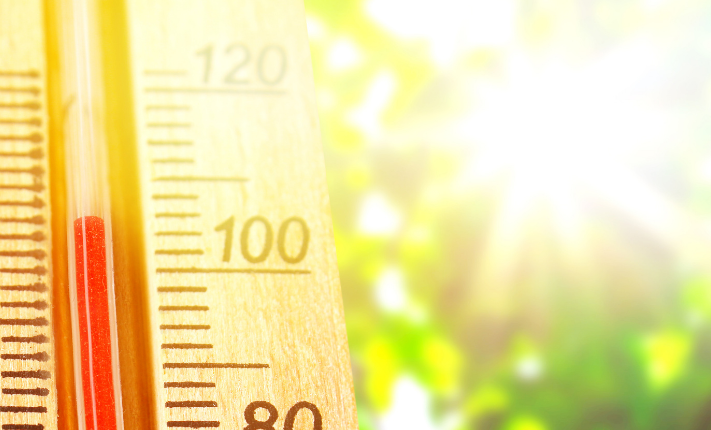Why Does Hot Air Rise?
If you live in a 2-story home, you may have noticed the following on a cold day. Perhaps you went to the upper floors to find that it’s warmer upstairs with a lower temperature downstairs. This is because warm air quickly rises even when the temperature differences are small. But why does this happen?As air warms near the surface of the Earth, or on the first floor of a home, the air molecules move around faster, creating more space between those molecules making the air less dense than the cooler air above it. The warm, less dense air rises while the cooler, more dense air sinks down.
At home you may ask, “Does cold air rise or sink?”. The answer is cold air sinks. As a higher temperature occurs in your home the cold air sinks and compresses the air and heats slowly. As the cold air sinks, air pressure on your first floor of the house will be raised. Modern indoor air cooling systems can help manage this temperature difference between floors but heat rises nonetheless.
Warm Air Stability vs. Instability
Because warm air rises and cooler air sinks, when warm air is layered on top of cooler air, it is considered to be in a stable state, and the two layers will remain separated. However, if cool air is layered on top of warmer air, the layers are unstable and will mix together as the warm air rises and cool air sinks. The lowest 1 to 5 miles of the Earth’s atmosphere is actually unstable, which is called atmospheric instability, and is why it is possible for clouds and thunderstorms to form!
What is Convection?
The rising of warm air is how heat (or energy) is transferred throughout our atmosphere. This warm air process is called convection, and the rising of warm air and sinking of cold air is called a convection current. These warm and cold air convection currents can also be seen in a liquid, like a pot of boiling water on your stove. Convection currents help heat the water in the pot as the warm water rises to the top and the cooler water sinks to the bottom which begins to warm, eventually causing more convection currents and eventually heating up the entire pot of water, similar to hot and cold air in your home or the outdoors.
Both air and water are considered fluids and they have some similar properties, so we can use water to simulate the flow of air in our atmosphere. Explore how warm and cold water interact in this fun experiment!
Hot Air Rises, Cold Air Sinks At-Home Experiment
Materials needed:
- Two different colors of food coloring (we recommend red and blue)
- Two glasses or jars
- Hot water and cold water
- A straw
Instructions:
- Fill two jars/glasses with water, one with cold water (add ice to it) and one with warm (microwave it).
- Add red food coloring to warm water and stir.
- Add blue food coloring to cold water and stir.
- Take a straw and stick it 1/4 of the way into warm water. Put your thumb over it and pull it out.
- Keeping your thumb over the straw, now stick it 1/2 into cold water, take your thumb off and then put your thumb back over the straw. Pull out the straw.
- Notice that the cold (blue) water is separated from the warm (red) water in the straw and they don’t mix. The cold water is on the bottom and red water is on the top and they stay separated.
- Repeat steps 1-5 from above, but with the cold water first and the warm water second. When you pull out the straw, watch the warm (red) water mix up (rise) into the cold (blue) water.
Summary
This activity demonstrates the movement of warm and cold water and how they mix, or don’t mix, when brought into contact. This phenomenon is similar to what happens in the Earth’s atmosphere where warm air rises and cold air sinks.
When the warm (red) water is pulled through the straw into the cold (blue) water, it stays separated and doesn’t mix. This is because cold water is denser than warm water, and so it sinks to the bottom. In the same way, when cold air sinks towards the Earth’s surface, it affects weather patterns and can cause storms or precipitation.
Conversely, when the cold (blue) water is pulled into the warm (red) water, it rises and mixes with the warm water. This is similar to what happens when warm air rises, as it carries moisture and creates humid air. This process of rising hot air and sinking cold air causes air exchange and is responsible for the weather patterns we experience, especially during peak seasons.
By observing this simple activity, we can gain a better understanding of the principles that govern our atmosphere and weather patterns.So, next time your friends ask you why hot air rises and cold air sinks you can easily explain how it works!
